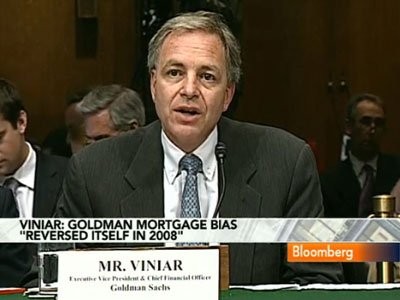Is Goldman Sachs Still A Winner (GS GSRLX)
Post on: 22 Июнь, 2015 No Comment

Goldman Sachs Group, Inc. (GS ) has always been associated with success. Not everyone is a big fan of what is sometimes referred to as the “evil empire,” but if you’re looking for an investment that’s likely to be a long-term winner, then Goldman Sachs has to at least be part of the conversation.
What is Goldman Sachs?
With all the changes in the financial sector throughout the years, it’s difficult to keep up with what exactly investment banks are doing to keep revenue and income growing. Understanding Goldman Sachs is simple. It operates in four segments:
-Investment banking
-Institutional client services
-Investing and lending
-Investment management
That’s nice, but is Goldman Sachs still growing?
Q3 Performance
In the third quarter, Goldman Sachs delivered diluted earnings-per-share of $4.57 versus $2.88 in the year-ago quarter. Revenue increased to $8.39 billion from $6.72 billion. Return on equity improved to 11.8% from 8.1%. And Goldman Sachs repurchased $7.1 million shares of common stock. This dedication to buying back shares is important for investors because it reduces the share count, which then improves earnings-per-share.
Now you might be wondering how Goldman Sachs has managed to perform so well. Let’s take a look. (For related reading, see: Goldman, the Muppets and the Mystery of ‘Pretty Fishy; Dodgy’ Holdings .)
Global Challenges
The information below is paraphrased from Goldman Sachs’ most recent 10-Q SEC filing (from the third quarter). Keep in mind that SEC filings aren’t like press releases. In a press release, a company can angle information to give it a positive slant. In an SEC filing, everything must be 100% factual — it’s the law.
In the United States, there was a slowdown in consumer spending and business fixed investment. This is cause for concern, but net exports and federal government spending both increased.
Loading the player.
In Europe, there was export growth, but consumer spending and government consumption declined. Unemployment remained high and inflation remained suppressed.
In Japan, GDP increased modestly after it was down sharply in the second quarter due to a consumption tax hike.
In China, GDP increased.
In India, economic growth decelerated.
If you look at all of this information as a whole, it might not suggest that Goldman Sachs is capable of delivering in such a challenging environment. But there are other factors at play, including accommodative monetary policies by the U.S. Federal Reserve and the Bank of Japan. The European Central Bank also announced a purchase program of asset-backed securities and covered bonds. (For related reading, see: The Evolution of Goldman Sachs .)
In the investment banking industry, underwriting has declined significantly. However, mergers and acquisitions have increased.
If all of this is confusing to you and you just want more facts for Goldman Sachs, then let’s have at it.
Dividend Performance
You already know that Goldman Sachs recently improved its top-line and bottom-line performances. Now let’s take a look at dividends. (For more, see: Two Dividend ETFs You Need to Know .)
Yield: 1.23% (Average yield for Financials: 4.19%)
Annual Payout: $2.40 (paid quarterly)
Payout Ratio: 13.9%
The bottom line here is that while the dividend yield is below average (and dividend increases are small), payouts are consistent. But if you’re looking for a dividend play, then you might want to take a slightly different angle. (For more, see: Invest in Dividend Aristocrats with this ETF .)
Another Way to Play It
You can also take a gander at the Goldman Sachs Rising Dividend Growth Fund (GSRLX ). Below is the way the fund describes itself:
“The investment seeks long-term growth of capital and current income. The fund normally invests at least 80% of its net assets plus any borrowings for investment purposes in equity investments of dividend-paying U.S. and foreign companies with market capitalizations of at least $500 million. It generally invests only in common and preferred stocks of companies (including REITs) that have paid dividends for at least 10 consecutive years at an increasing rate that has averaged at least approximately 10% per year over a 10-year trailing period. It is non-diversified.”
Goldman Sachs Rising Dividend Growth Fund has an expense ratio of 0.81%, but it has delivered a 5-year return of 14.56%
The Bottom Line
Whether it’s Goldman Sachs or Goldman Sachs Rising Dividend Growth Fund, it would be difficult to go wrong either way over the long haul. With the broader market at record highs and accommodative monetary policies playing a big role in that performance, a setback is possible. But savvy investors don’t focus on setbacks. If anything, they setbacks as opportunities to buy more. The key is to invest in quality, and you should find quality here. Please do your own research prior to making any investment decisions. (For more, see: 3 Preferred Stock ETFs with Huge Dividends .)
Dan Moskowitz doesn’t own any shares of Goldman Sachs.














